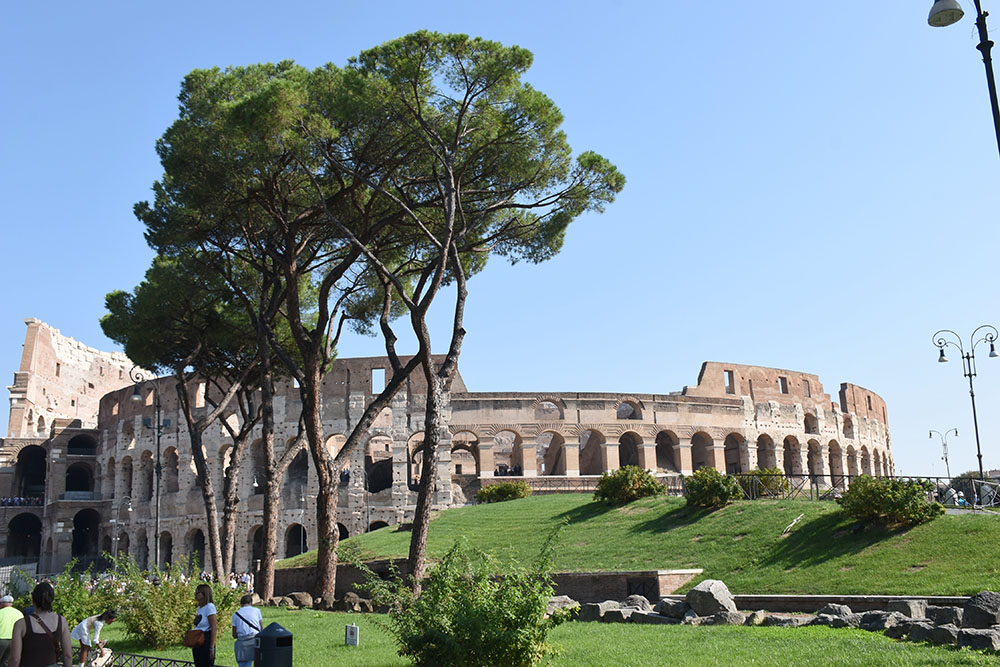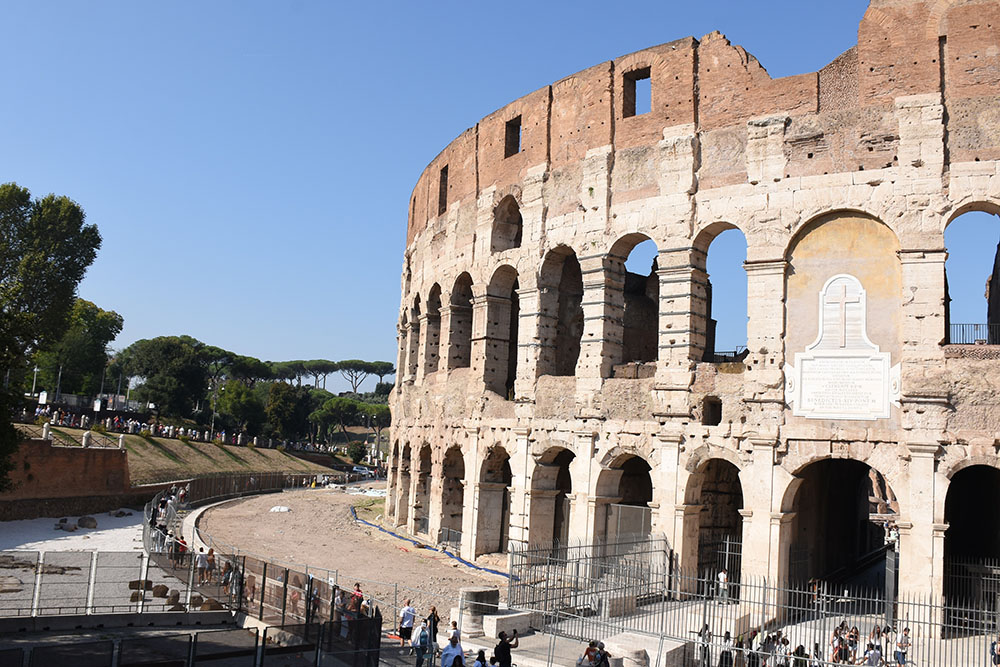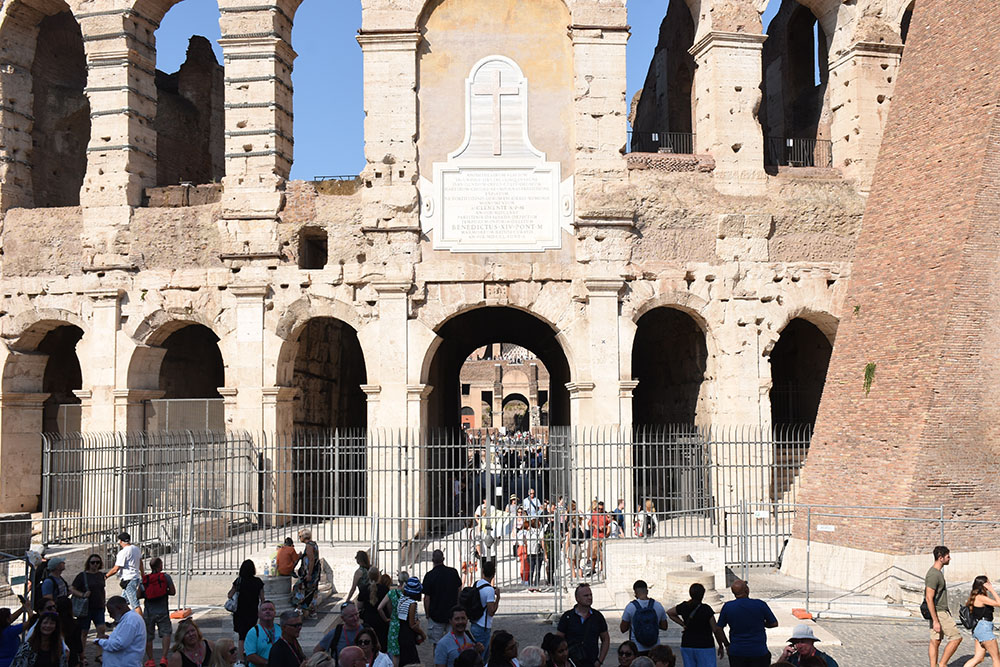Vatican basic info
Vatican Basic Info The Vatican is a city-state located in the center of Rome. Although the Vatican is a state, you don’t need a passport, special permit, or even a ticket to

The most significant attraction in Rome is undoubtedly the Colosseum. Built between 72 and 80 AD, its grandeur captivates tourists, whether they’re history enthusiasts or not. If you’re planning to explore the Colosseum, we suggest staying at one of the hotels nearby Colosseum.
The idea and construction of the Colosseum are credited to the Flavian Dynasty, which includes the reign of three emperors:
The construction of the Colosseum followed the rule of the infamous Emperor Nero, who utilized the fire of 69 AD to build himself a palace – Domus Aurea – surrounded by gardens and an artificial lake spanning 120 hectares. As a departure from his reign and an initiative to start the rule of the new Flavian dynasty differently, Vespasian came up with the idea to build a structure that would give back to the people what Nero had taken, thus constructing the Colosseum on the site of the lake.
Planning and building this massive amphitheater required detailed planning and innovative engineering techniques, including advanced drainage systems and precisely calculated architectural proportions. The construction was carried out with the help of prisoners from the Jewish War who were considered slaves.
The outer wall structure is 57 meters tall, constructed from travertine marble sourced from quarries across Italy.
The amphitheater, akin to modern stadiums, could accommodate 80,000 people and was used for public gatherings, gladiator fights (if you haven’t seen the movie Gladiator starring Russell Crowe, here’s a recommendation), historical battle reenactments, and executions.
The interior of the Colosseum offered a diverse experience to visitors, from luxurious seats on the podium to cramped upper levels. Although the seating reflected social hierarchies, the lower strata of society were subordinate and rarely had access to more privileged areas.
The Colosseum was damaged in 217 by a massive fire. The cause of the fire is unknown, although it is often found in literature that it was a lightning strike. Gladiator fights were used until 404.
Later, with the advent of Christianity, the Colosseum was seen as a place where many early Christians lost their lives and were even thrown to lions, thus it is considered a holy place, and a small church was erected in the arena itself. According to historians’ estimates, around half a million people and a million animals lost their lives in the Colosseum.
It was damaged by a major earthquake in 1349, and during the Middle Ages, the stone from the Colosseum was used for the construction of other buildings and churches. Some parts of the Colosseum were used for housing.
It was later restored several times in the 19th century, and fully explored during the reign of Benito Mussolini.

When visiting the Colosseum, you can enjoy the external appearance of this magnificent building, but to tour the interior of the Colosseum, you need to buy tickets. You can purchase them online, but first, decide whether you want a guided tour with multimedia content or just access to the interior of the Colosseum and the famous arena. Note that for groups of over 10 visitors, group tickets are possible. Also, a Colosseum ticket may be part of the Rome Pass, which includes tickets to other attractions in Rome such as the Vatican Museums and the Sistine Chapel, St. Peter’s Basilica.
For adventurers, it is recommended to explore the underground part of the Colosseum with special tickets that were opened to visitors only in 2021. These are the tunnels and rooms where gladiators prepared for battles and where wild animals used in fights were kept.
In any case, a photo with the Colosseum in the background is completely free.

The Colosseum is located in the city center, and if you’re staying in the city itself, walking to the Colosseum is an option. If you want to take the metro, use the Line B and get off at the Colosseo station.
Every day: 8:30 am until 7 pm
Closed on December 25th and January 1st.
Author: Yaga – drop a comment on X 😉
Vatican Basic Info The Vatican is a city-state located in the center of Rome. Although the Vatican is a state, you don’t need a passport, special permit, or even a ticket to
ATP Rome – Don’t miss it! The ATP tennis tournament in Rome is one of the most well-known events, alongside Monaco and Madrid, serving as a prelude to the Roland Garros, the on
Pantheon The Pantheon is one of the oldest Roman landmarks alongside the Colosseum and the Roman Forum. Tucked away between buildings, it surprises visitors with its appearance as
Trevi Fountain One of Rome’s most famous landmarks is the Trevi Fountain. This is evidenced by the daily crowd of people flocking around the fountain to take photos and selfi
